Explore places with Nithesh Tours And Travels
Places in Karnataka
Mysore
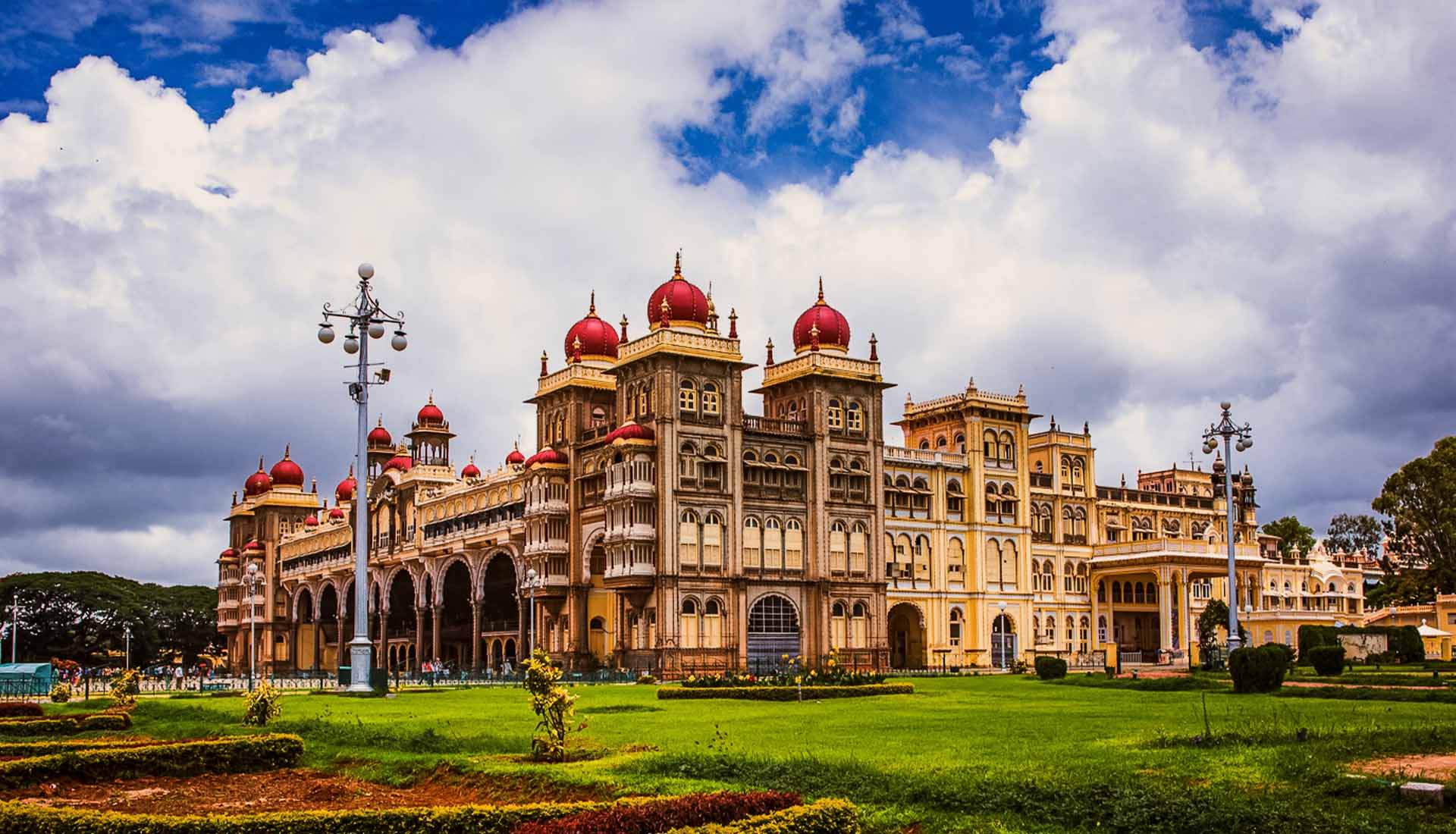
Mysore officially Mysuru is the second-most populous city in the southern Indian state of Karnataka. It is the headquarters of Mysore district and Mysore division. As the traditional seat of the Wadiyar dynasty, the city functioned as the capital of the Kingdom of Mysore for almost six centuries (1399 to 1947). Known for its heritage structures, palaces (such as the famous Mysore Palace), and its culture, Mysore has been called the "City of Palaces", the "Heritage City", and the "Cultural Capital of Karnataka". It is one of the cleanest cities in India according to the Swachh Survekshan.
Madikeri
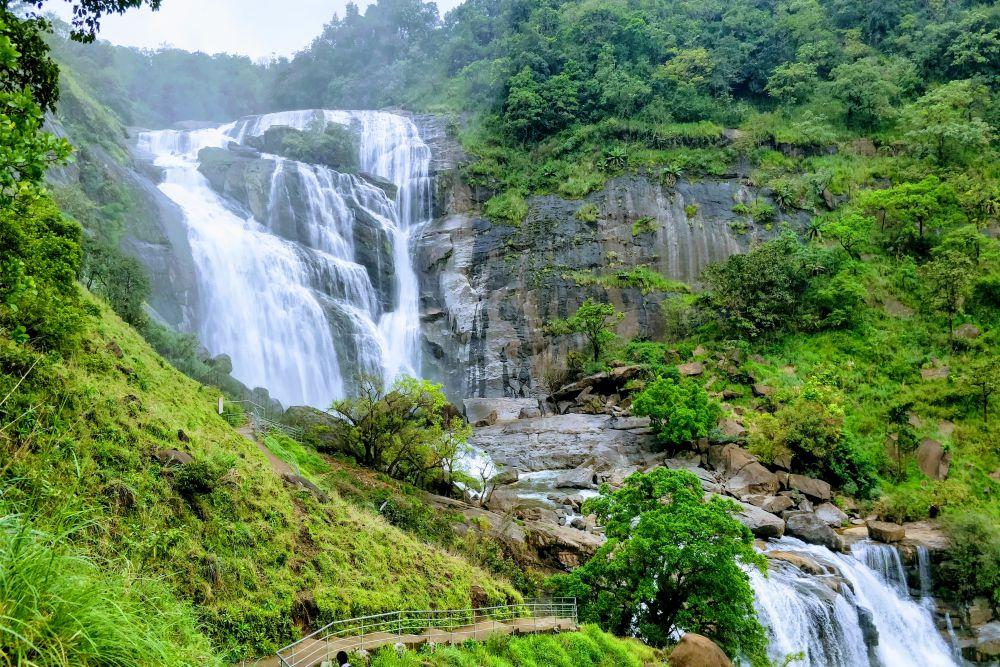
Madikeri is a hill station town in Madikeri taluk and headquarters of Kodagu district in Karnataka, India. Its original name was Muddurajanakeri which means "the city of Mudduraja".It is recognised as one of the world's eight "hottest hotspots" of biological diversity and also one of UNESCO World Heritage Sites.
Mangaluru
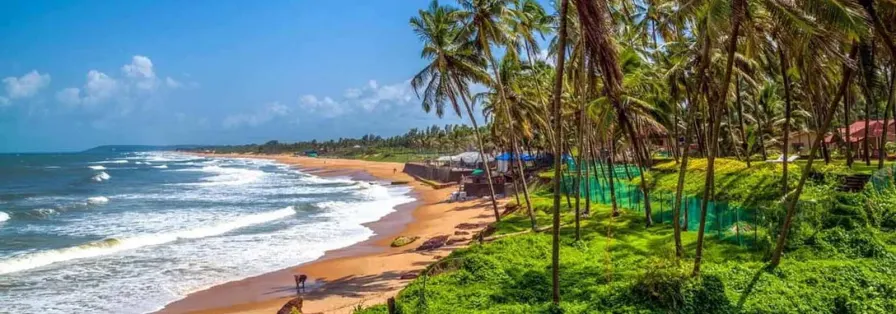
Mangalore officially known as Mangaluru, is a major industrial port city in the Indian state of Karnataka and on the west coast of India. It is located between the Laccadive Sea and the Western Ghats about 352 km (219 mi) west of Bangalore, the state capital, 14 km north of Karnataka-Kerala border and 297 km south of Goa. Mangalore is the state's only city to have all four modes of transport—air, road, rail and sea. The population of the urban agglomeration was 619,664 according to the 2011 national census of India. It is known for being one of the locations of the Indian strategic petroleum reserves.
Dharmasthala
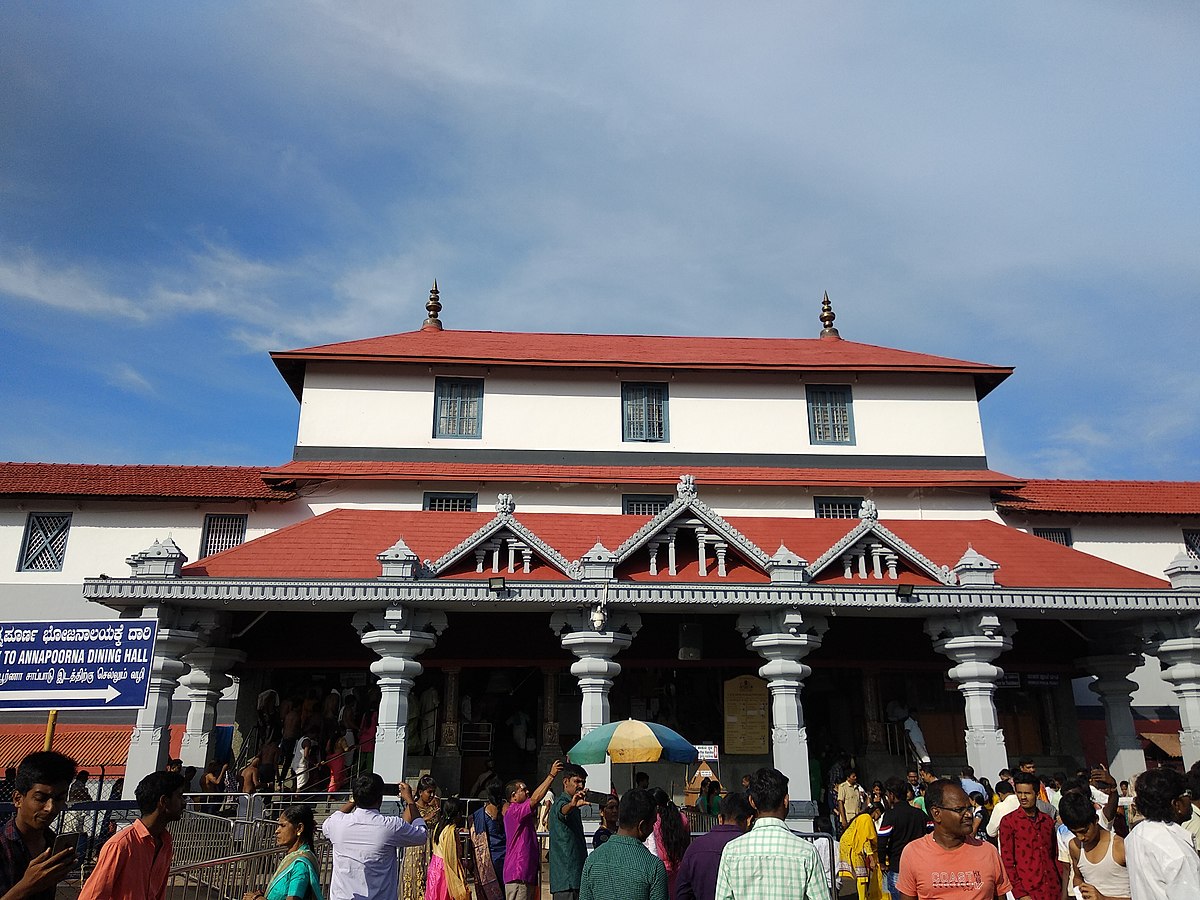
The town is known for its centuries-old Dharmasthala Temple, devoted to the Hindu god Manjunatha. Some other temples and shrines are dedicated to Ammanavaru, Chandranath and the Dharma Daivas (guardian spirits of Dharma) — Kalarahu, Kalarkayi, Kumaraswamy and Kanyakumari. The temple is unusual because it is a Hindu temple run by a Jain administration, and poojas are conducted by Hindu priests who subscribe to the Vaishnava ideologies. Most Shiva temples are run by Shaivas as opposed to the Madhva Brahmins, devotees of Vishnu and his avatars. On average, the temple attracts around 2,000 pilgrims a day.
Kukke Subramanya
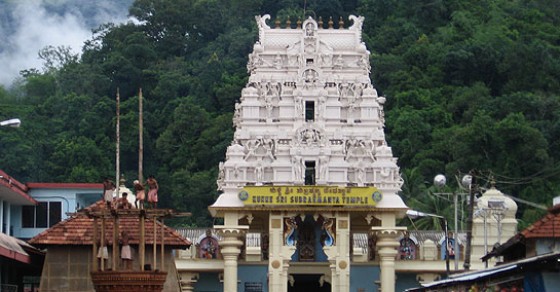
Subramanya is a village located in Kadaba Taluk in Dakshina Kannada, India. The Kukke Subrahmanya Temple is located here. It is about 105 kilometres (65 mi) from Mangalore, connected by train and road. It was originally named "Kukke Pattana".
Kollur Mookambika
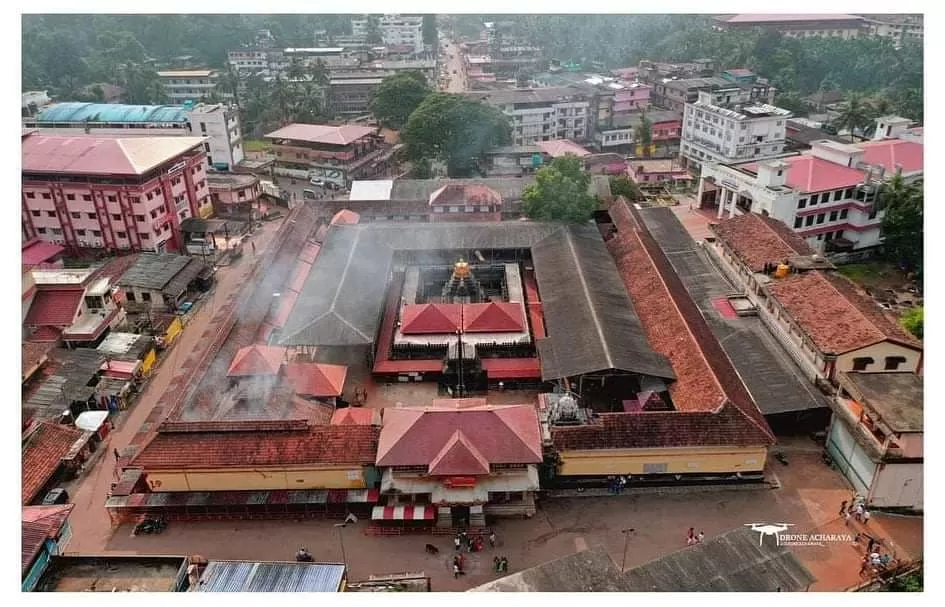
Kollur Mookambika Temple is located at Kollur in Byndoor Taluk of Udupi District in the region of Tulunadu and in the state of Karnataka, India. It is a Hindu temple dedicated to the mother goddess Mookambika.Mookambika is the union of Adipara Shakthi and Parabramha as the Linga has integrated on its left side "Maha Kali, Maha Lakshmi and Maha Saraswathi". The temple is very special because it is part of the 108 Durgalayas and 108 Shivalayas. It is situated in the foothills of Kodachadri hills, on the southern bank of Souparnika River. Being situated in the land between Gokarna and Kanyakumari, believed to be created by sage Parashurama.
Udupi
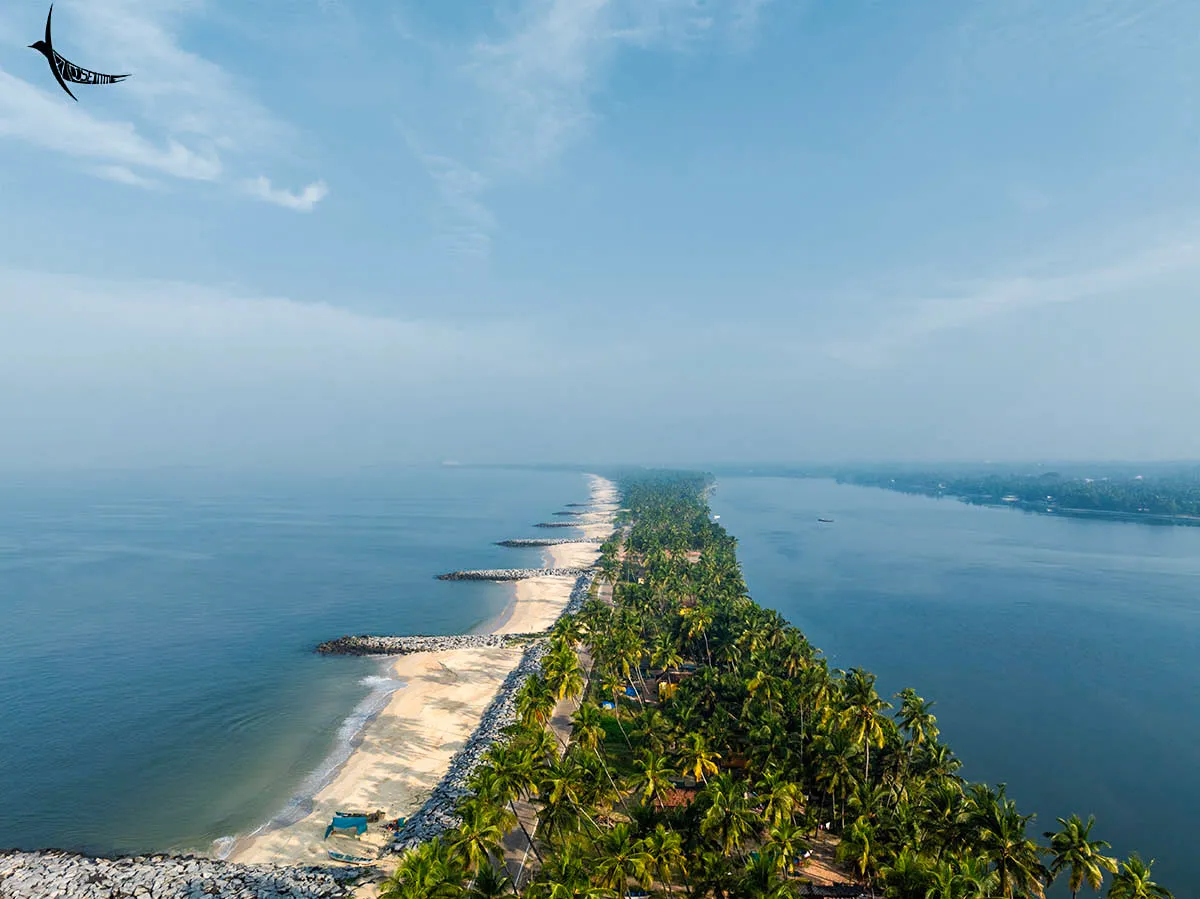
Udupi is a city in the Indian state of Karnataka. Udupi is situated about 55 km (34 mi) north of the educational, commercial and industrial hub of Mangalore and more than 400 km west of state capital Bangalore by road. It is the administrative headquarters of Udupi district, and one of the fastest-growing cities in Karnataka. Udupi is one of the top tourist attractions in Karnataka and has various educational institutions. It is notable for the Krishna Temple and is also known as the temple city. It also lends its name to the popular Udupi cuisine, is also known as Parashurama Kshetra, and is famous for Kanakana kindi. A centre of pilgrimage, Udupi is known as Rajata Peetha and Shivalli (Shivabelle).
Murdeshwar
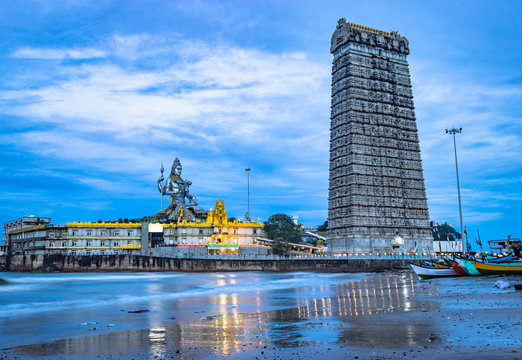
Murdeshwar is a town in Uttara Kannada district in the state of Karnataka, India, and lies on the coast of the Laccadive Sea. It contains the world's third tallest Shiva statue, as well as the Murudeshwara Temple. The town has a railway station on the Mangalore-Mumbai Konkan railway route.
Gokarna
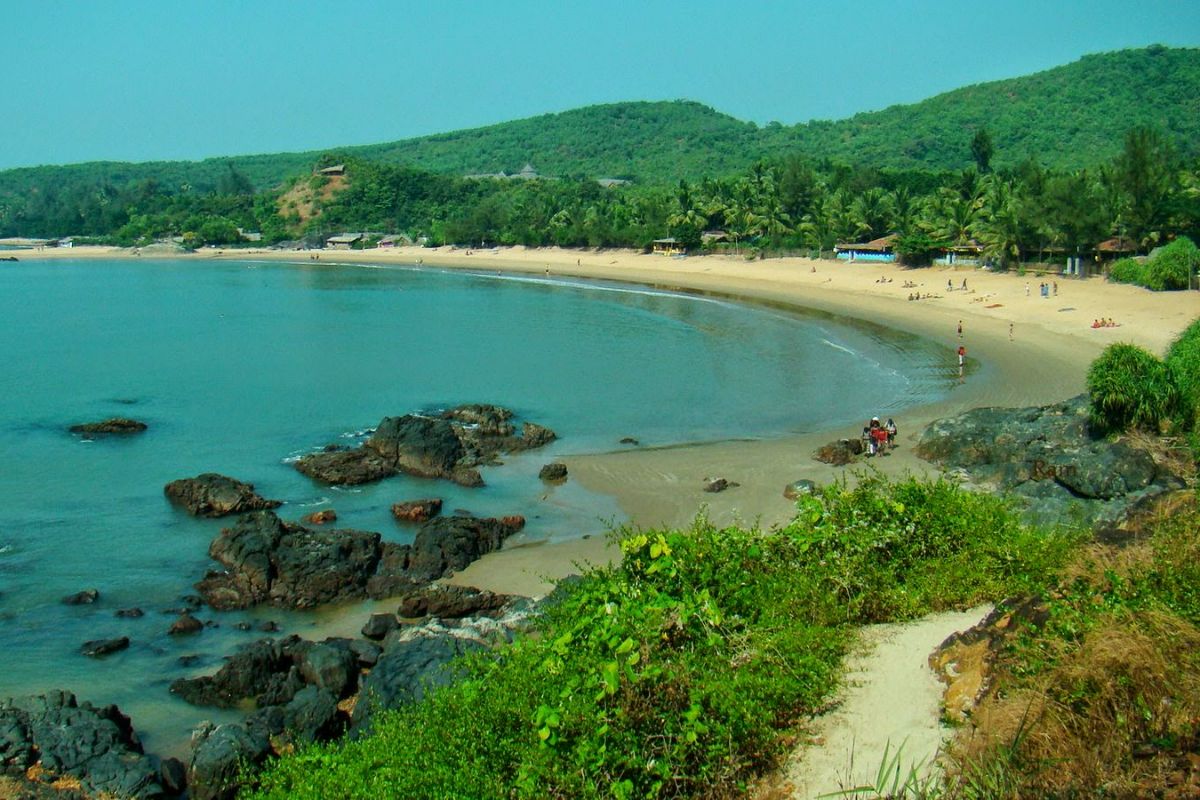
Gokarna is a small temple town located in the Uttara Kannada district of Karnataka state in southern India, It has a population of around 20,000. Shiva is the most worshipped deity in the town. Gokarna's main temple, Mahabaleshwara, is dedicated to Shiva. The temple houses what is believed by some to be the earliest Shiva lingam (Atmalinga).Gokarna is known as one of seven important centers of pilgrimage in Hinduism.[citation needed] It lies on what was once an unspoiled coastline at the estuary of the River Aghanashini. Due to an increase in tourism, the character of the town has changed, and is no longer just a center of pilgrimage, though large numbers of Shiva devotees continue to visit for prayer and worship.
Badami
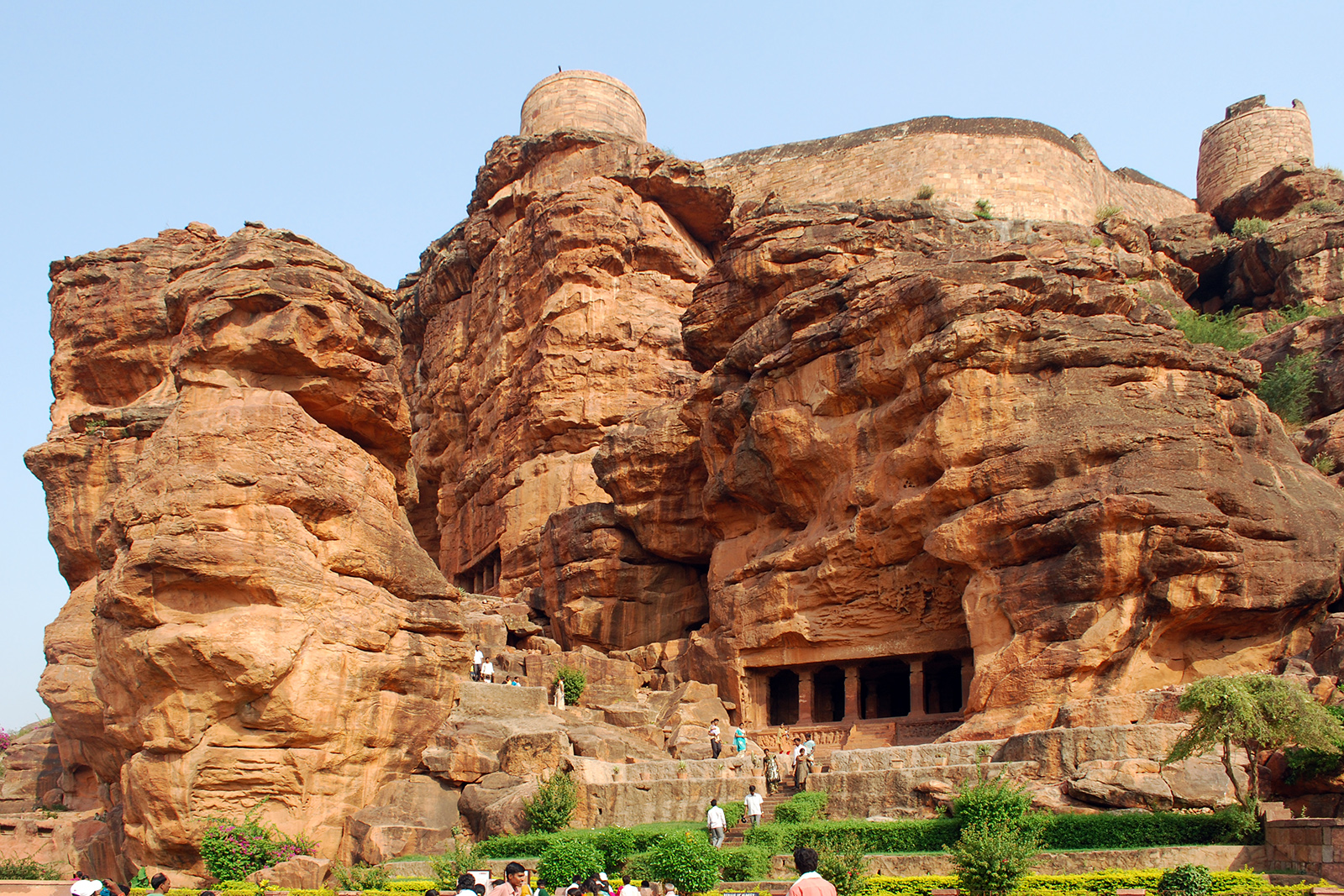
Badami is a town and headquarters of a taluk by the same name, in the Bagalkot district of Karnataka, India. It was the regal capital of the Badami Chalukyas from 540 to 757. It is famous for its rock cut monuments such as the Badami cave temples, as well as the structural temples such as the Bhutanatha temples, Badami Shivalaya and Jambulingesvara Temple. It is located in a ravine at the foot of a rugged, red sandstone outcrop that surrounds Agastya lake.Badami has been selected as one of the heritage cities for HRIDAY - Heritage City Development and Augmentation Yojana scheme of Government of India.
Pattadakal
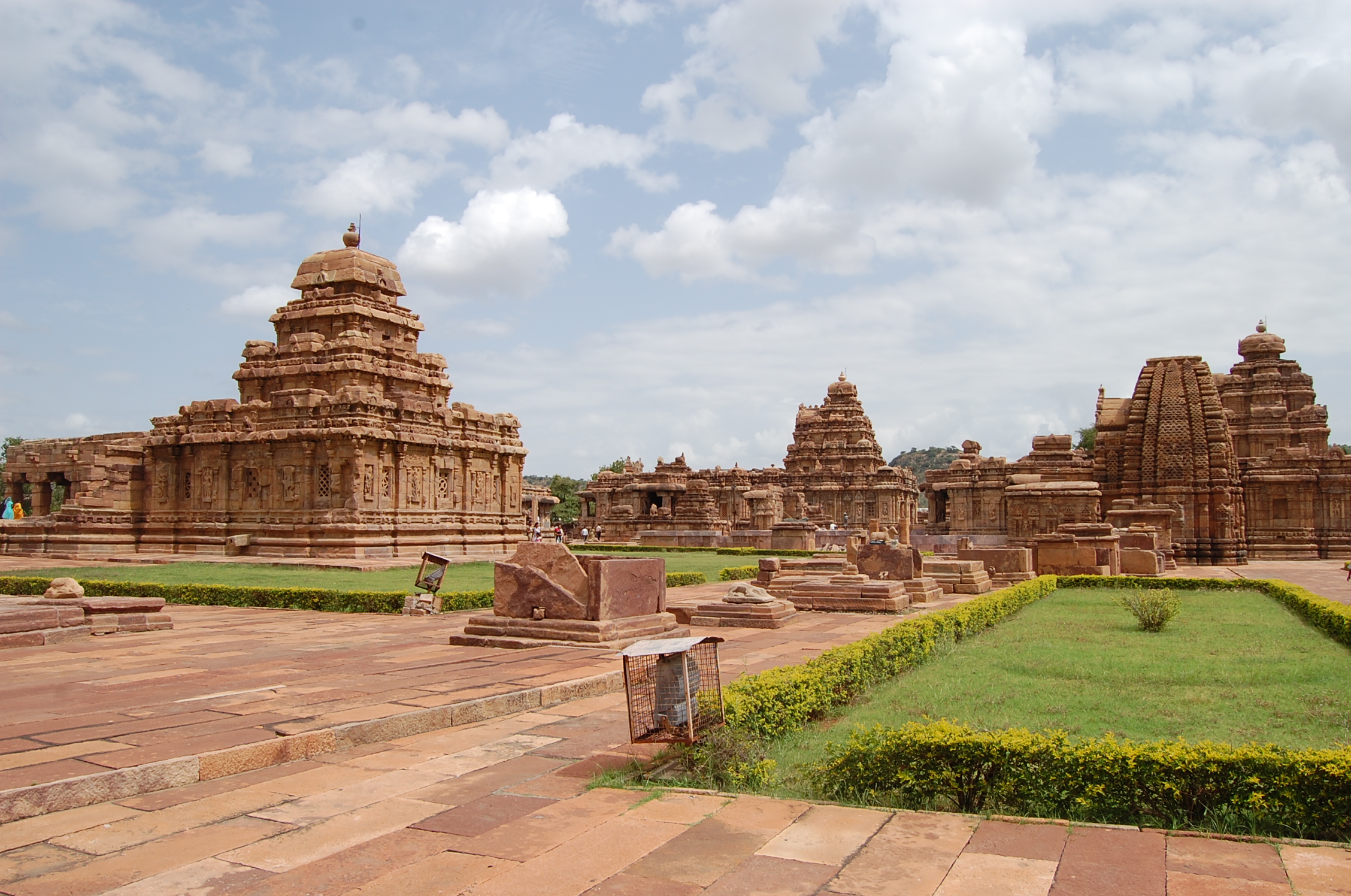
Pattadakal, also called Raktapura, is a complex of 7th and 8th century CE Hindu and Jain temples in northern Karnataka, India. Located on the west bank of the Malaprabha River in Bagalkot district, this UNESCO World Heritage Site is 23 kilometres (14 mi) from Badami and about 9.7 kilometres (6 mi) from Aihole, both of which are historically significant centres of Chalukya monuments. The monument is a protected site under Indian law and is managed by the Archaeological Survey of India (ASI).
Aihole

Aihole also referred to as Aivalli, Ahivolal or Aryapura, is a historic site of ancient and medieval era Buddhist, Hindu and Jain monuments in Karnataka, India that dates from the sixth century through the twelfth century CE. Most of the surviving monuments at the site date from the 7th to 10th centuries. Located around an eponymous small village surrounded by farmlands and sandstone hills, Aihole is a major archaeological site, featuring over 120 stone and cave temples spread along the Malaprabha river valley, in Bagalakote district.
Kudalasangama
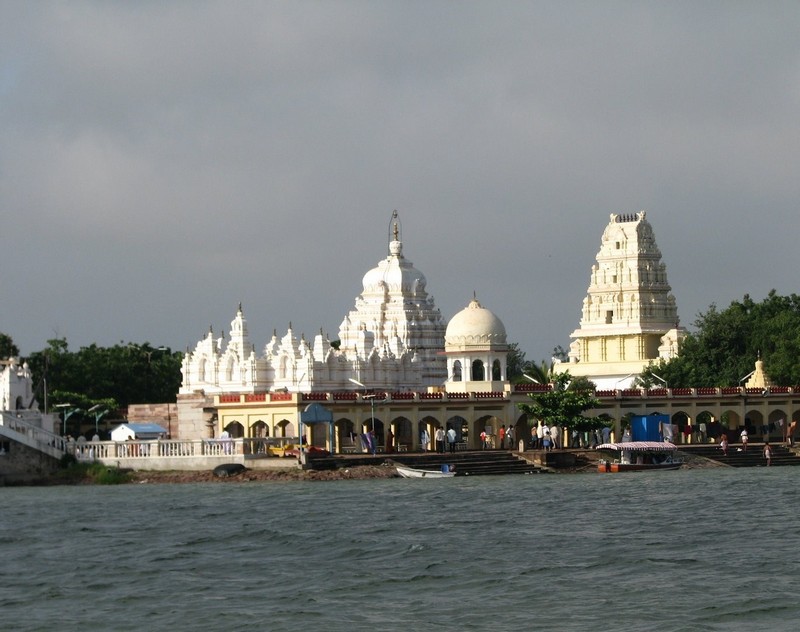
Kudalasangama in India is an important centre of pilgrimage for Lingayats. It is located about 15 kilometres (9.3 mi) from the Almatti Dam in Bagalkote district of Karnataka state. The Krishna River and Ghataprabha River merge here and flow east towards Srisailam (another pilgrim center) Andhra Pradesh. The Aikya Mantapa or the holy Samādhi of Basavanna, the founder of the Lingayatism along with Linga, which is believed to be self-born (Swayambhu), is here. The Kudala Sangama Development Board takes care of the maintenance and development.
Bijapur
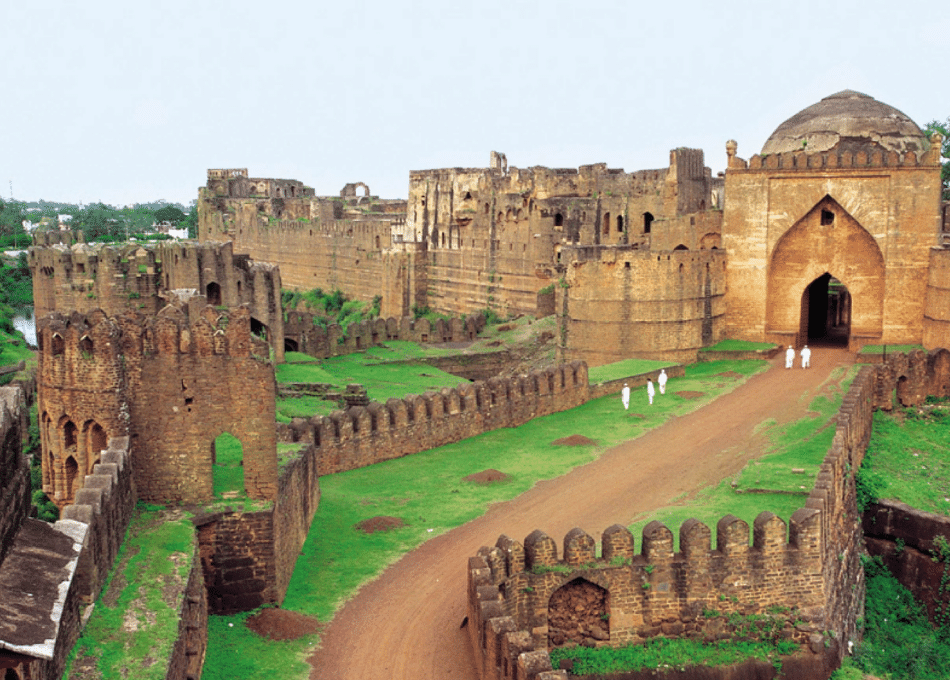
Bijapur is the district headquarters of Bijapur district of the Karnataka state of India. It is also the headquarters for Bijapur Taluk. Bijapur city is well known for its historical monuments of architectural importance built during the rule of the Adil Shahi dynasty. It is also well known for the popular Karnataka premier league team, the Bijapur Bulls. Bijapur is located 519 km (322 mi) northwest of the state capital Bangalore and about 550 km(340 mi) from Mumbai and 210 km (130 mi) north east of the city of Belgaum.
Belgaum
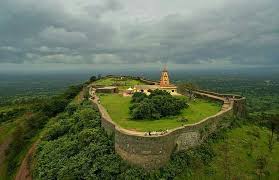
Belgaum, officially known as Belagavi is a city in the Indian state of Karnataka located in its northern part along the Western Ghats. It is the administrative headquarters of the eponymous Belagavi division and Belagavi district. The Government of Karnataka has proposed making Belgaum the second capital of Karnataka alongside Bangalore, hence a second state administrative building Suvarna Vidhana Soudha was inaugurated on 11 October 2012.
Hubli
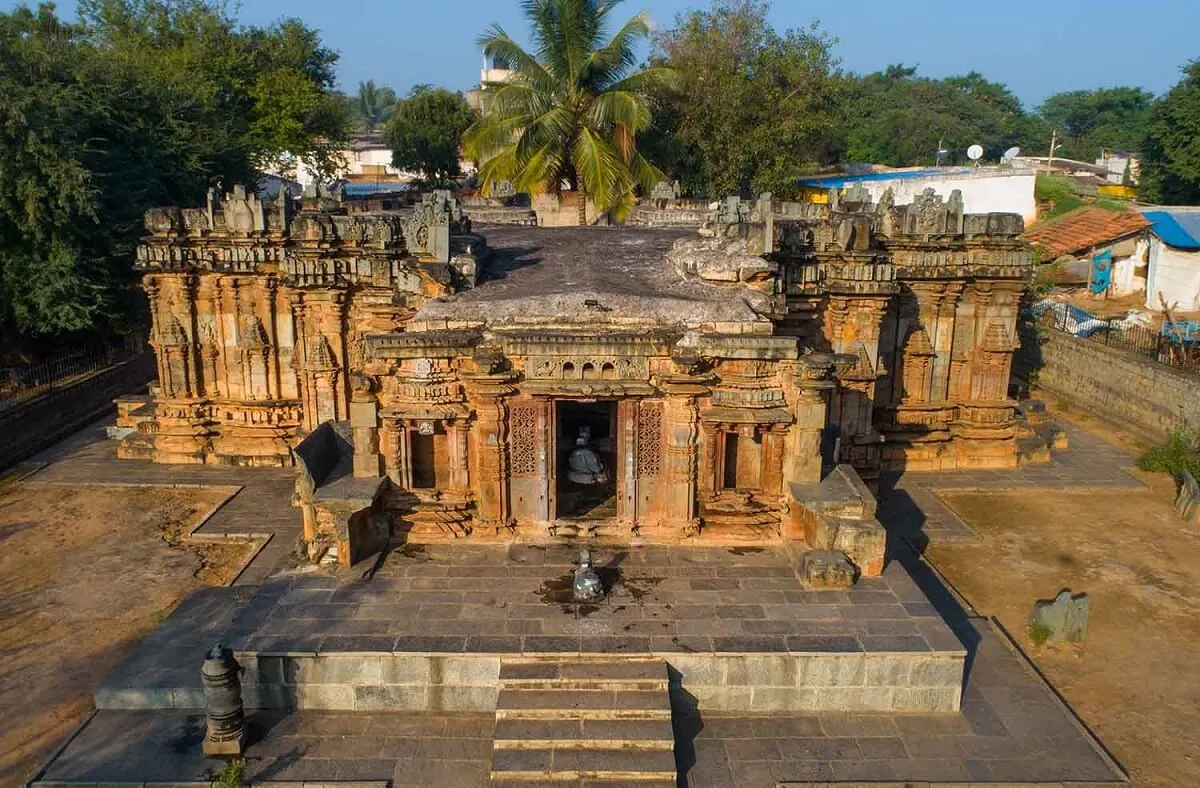
Hubli is a city in the Indian state of Karnataka. The twin cities Hubli-Dharwad form the second largest city in the state by area and population and the largest city in North Karnataka. Hubli is in Dharwad district of Karnataka and is the taluk headquarters of Hubli City and Hubli Rural. Although it hosts the HDMC office, the district headquarters is in Dharwad. It also houses the largest number of government offices outside the state capital. In 2016, Hubli-Dharwad was selected for solar city / green city master plans. In 2017, government of India included Hubli-Dharwad city for a smart city project, a flagship scheme for overall development of infrastructure in the twin-cities.
Hampi

Hampi also referred to as the Group of Monuments at Hampi, is a UNESCO World Heritage Site located in Hampi (City), Ballari district now Vijayanagara district, east-central Karnataka, India. Hampi predates the Vijayanagara Empire; it is mentioned in the Ramayana and the Puranas of Hinduism as Pampa Devi Tirtha Kshetra. Hampi continues as a religious centre, with the Virupaksha Temple, an active Adi Shankara-linked monastery and various monuments belonging to the old city.
Chitradurga
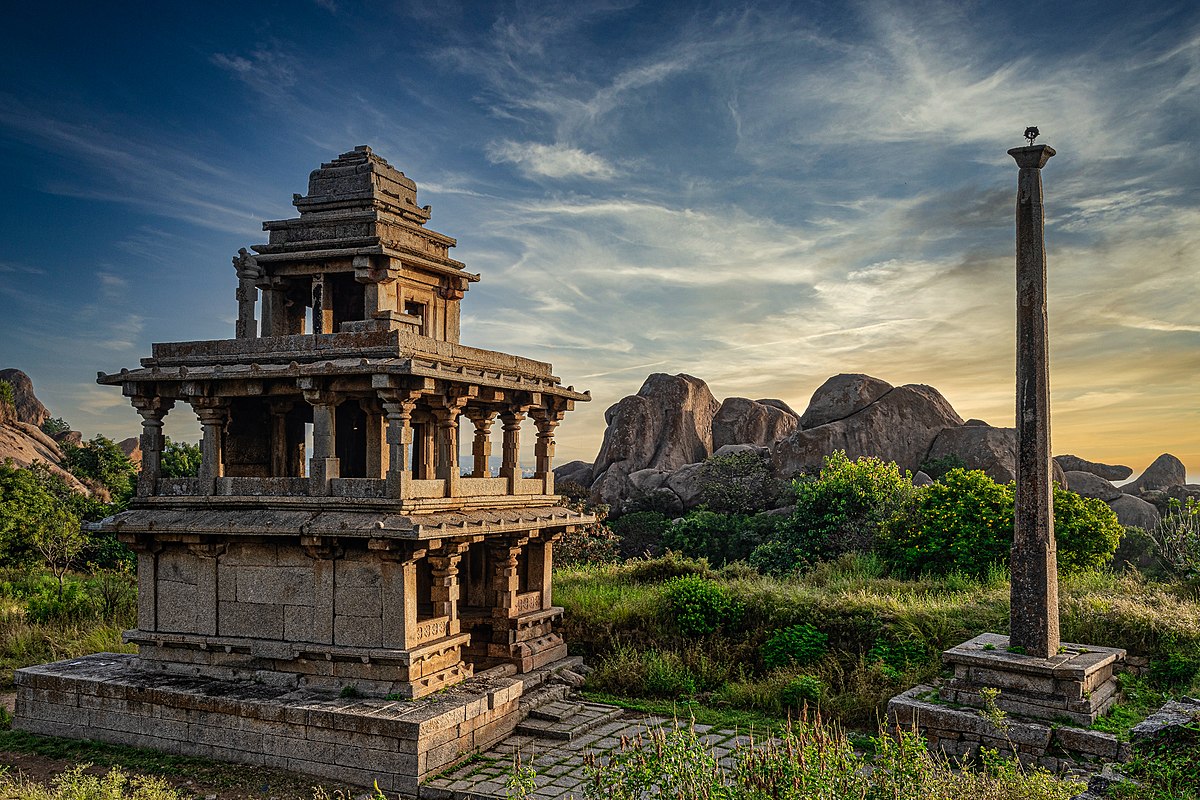
Chitradurga is a city and the headquarters of Chitradurga district, which is located on the valley of the Vedavati river in the central part of the Indian state of Karnataka. Chitradurga is a place with historical significance which is located to the North West about 200 km from the state capital Bangalore. Chitradurga is a major tourist hub in Karnataka.The city is renowned for its 15th century Kallina Kote or Stone Fortress. This is formed of two Kannada words: 'Kallina' means "Stone's" and Kote means "Fort". Other names used in Kannada are 'Ukkina Kote": "Steel Fort" (metaphorically used to mean an impregnable fort) and 'Yelusuttina Kote': "Seven Circles Fort".